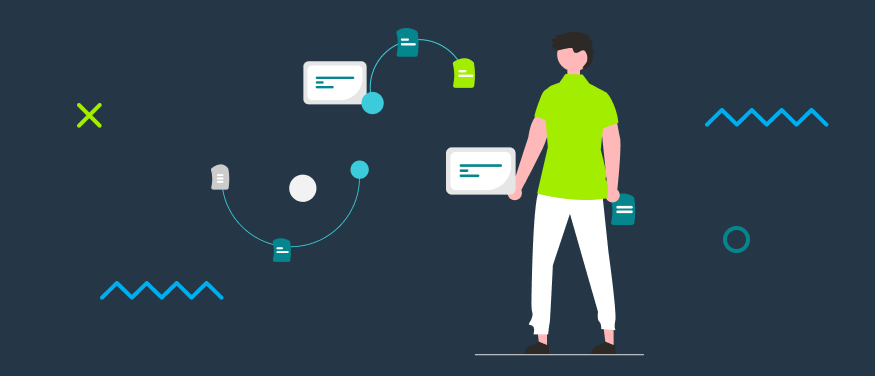User experience and usability are equally crucial issues in digital product design—although not necessarily at every stage of the software development life cycle. Especially when designing complex solutions and systems for the network industry. This is not as controversial as it sounds. Read on to find out why.
UX vs. Usability: what’s the difference?
Usability is a fundamental rule when designing a functional digital product. Bearing usability in mind, you adjust your product’s design to meet the needs of its target audience. Usability includes factors such as button size, legibility, and the selection of user-friendly contrasts and colors. It means ensuring product versatility by scaling for different types of devices. Usability also means appropriate marking of elements, and designing their states (reactions) to each user action. All these points must be considered when designing new products. A digital product which is not built on usability principles is like a door without a handle.
User experience is an entirely different story. UX design incorporates usability principles, but it also has to consider the product's value proposition. A good user experience aims to eliminate frustration, which means that UX design needs to overcome users' challenges and respond directly to their needs. To build a lasting relationship with the user, the design has to offer additional value; for example, by simplifying the interaction with the product or even eliminating the need for the interaction in the first place. To stretch the door metaphor: considering UX might lead you to design a door that opens automatically.
Interestingly, to create a positive user experience, and therefore user satisfaction, it can be necessary to eliminate design features in order to enhance usability.
The network applications often contain a huge amount of information that has to be shown clearly, and UX helps achieve that. However, this is only one example of why UX in network applications matters.

Keeping an open mind
When designing the UX of a product with a very specific (and specialized) target audience, the biggest challenge can be the level of expert knowledge that the designer must understand. Also, a specialist target audience will have preconceived ideas of what constitutes a successful product, based on their past experience. This expertise can force a focus on what has worked in the past and can limit a designer’s openness to solutions that offer a different approach, meaning the design is unlikely to offer a new and different value proposition.
The key is to ensure the client understands the process of digital product development - including what UX is, how development teams are set up, how they function, and so on. There is no one model or effective way to do this. Each time the understanding of these kinds of issues on the client's side is different, more or less complete, and more or less accurate. The best option is often to focus on those responsible for the product's business goals, demonstrating to them what benefits can come from each stage of UX design work. It is also useful to clearly explain what user experience is (and is not) and what role a designer plays in the whole process.
A UX designer is neither a network engineer nor a frontend engineer, though these roles are often involved with the user interface (UI), which can be somewhat confusing.
A UX designer understands the operation and purpose of a network product and its interactions. They acquire the necessary knowledge for the specific product, explore the relevant aspects in detail, and then design a process to achieve the product’s goal in a way that best suits users' real needs.
This guide of UX dos and don'ts helps you provide your network application with the best user experience and avoid errors.
The network environment is unique
In a network, everything is connected. Usability and user experience are influenced by the way processes relate to each other, including those that might be closely related but not directly involved in another process.
It’s tempting to sidestep this issue by simplifying network products, focusing on just a few interactions, backed by automation and artificial intelligence. However, this remains a designers’ dream of the future. In reality, the product and the process paths that govern it are determined by the needs of the specific target group. Even if theoretically the processes can be simplified and optimized, the particular requirements of the end users are the most important factor in defining the scope of the design. Sometimes, adding an additional step to a process for confirmation can have a crucial impact on a network engineer’s work.
The network environment consists of two main service paths.
The first is the design and compilation of infrastructure. The second is to monitor what has been previously set up:
- Day 1 phase—where data is entered, connections are set up, and rules and policies for the interaction of network elements are established; traffic-handling is also designed.
- Day 2 phase—where data from the existing infrastructure and traffic are monitored and recommendations for improvement are made.
It looks simple on paper. However, a real-life scenario is often far more complicated because both of these phases occur simultaneously, influence each other, and are equally complex. Moreover, both are required for the correct analysis of network infrastructure operation.
Sometimes, the complexity of the network environment can require specific UX principles. That is why it is good to know UX best practices in designing applications for network monitoring to enhance user experience.
Therefore, both paths have to be designed to maximize the product's usability, and to support and optimize the network engineers' work. At the same time, this links to the key end user requirement to access the network data as part of their everyday work. And this feeds into the design of the user experience.
Identifying requirements
There is no one-size-fits-all method of gathering and defining project requirements—each client has a unique product vision. Moreover, knowledge and expertise acquired over time, both on the client and the designer sides, can result in a narrower perspective that is risky for innovative product development. To avoid this risk, project participants need to approach the process with an open mind toward both business and end user needs. Every product’s unique value proposition should be discovered, internalized, and embodied by everyone involved in the software product development process.
To make sure that a design team is aligned with the client’s needs, it is good to begin the collaboration by clearly defining the user experience, ensuring all participants have a common and shared understanding.
Meeting with the client in an atmosphere of trust to hear about their needs is also an opportunity for the client to get acquainted with the development team.
Another good practice is to set up a series of meetings between people who will be collaborating on the product’s development. These may be team meetings with a specific focus, or even 1-to-1 meetings. Such meetings are a way to focus on (and dive deep into) specific details of the project, and also encourage the building of closer client relationships.
During such meetings, we can learn about the client's actual requirements. Are they solely focused on solid product usability, or do they need something more? Maybe the client's real need is a user experience that, apart from usability, also provides a specific value to users.
Whatever the outcomes of such meetings, the key to determining both the client’s business goals and the needs of end users is maintaining an open mind, unrestricted by previous experience.
Conclusion
So usability or user experience—which comes first? There is no single right answer to that question. Every case is different, and the final decision depends on various factors. As a UX designer, I am an adherent of the UX-first approach. However, sometimes this can be impossible or unprofitable, especially if we are talking about startups.
Taking into account all the tips from above, the safer (in every case) solution is to focus first on solidly built usability. After that, you can observe the users' activities and collect their feedback. Based on this information, you are then able to create a strong value proposition and design a relevant, high quality user experience.





